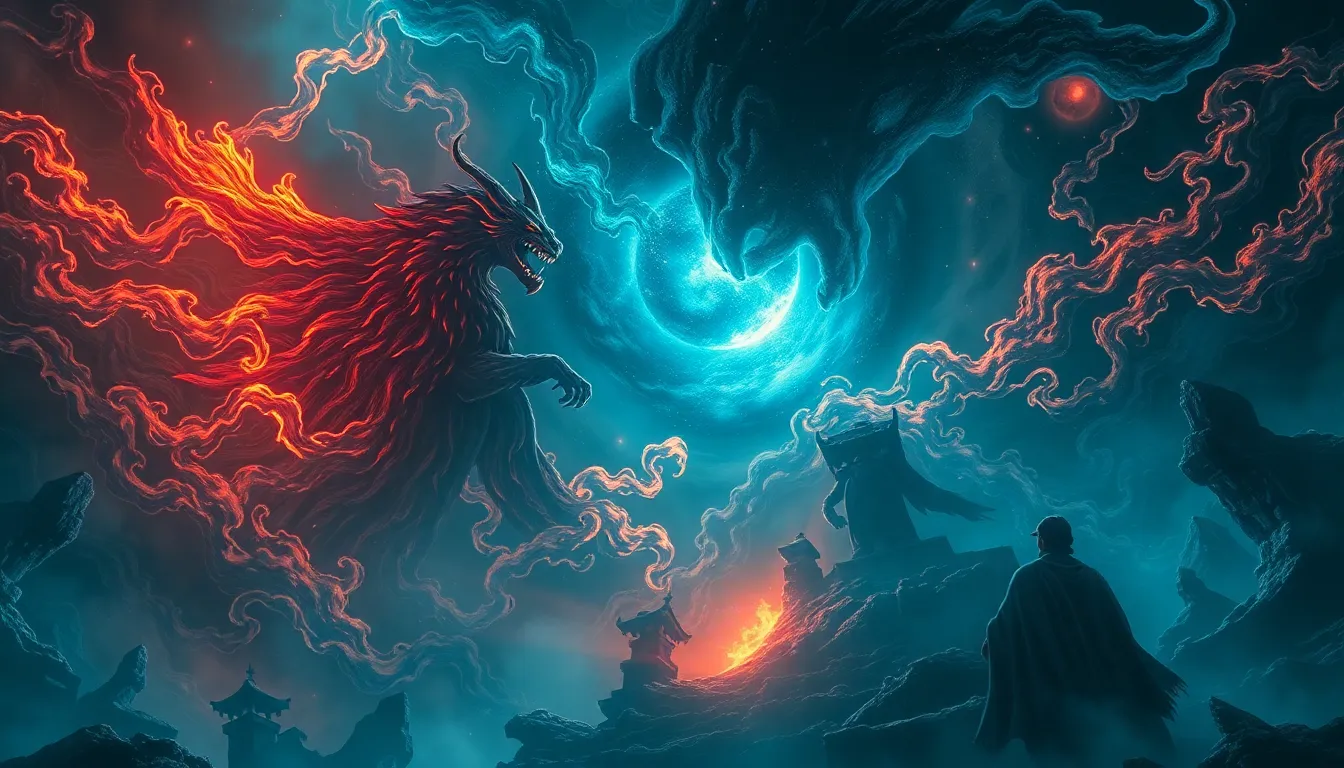The Clash of Legends: Epic Battles from Around the World!
I. Introduction to Epic Battles
Epic battles have long fascinated historians, writers, and the general public alike. These monumental clashes are not merely contests of arms; they are profound events that shape the destinies of nations and cultures. The significance of epic battles extends into various domains, including politics, mythology, and social identity.
This article will explore several legendary battles from different civilizations, highlighting their unique contexts and the lasting legacies they left behind.
II. The Historical Context of Legendary Battles
Understanding the historical context of legendary battles is crucial. The geography of a region often dictates the available resources and strategic advantages. For instance, mountainous terrains may favor defenders, while open plains can benefit cavalry forces.
Moreover, political, social, and economic factors play pivotal roles in shaping conflicts:
- Political Factors: Leadership, alliances, and rivalries can escalate tensions and lead to warfare.
- Social Factors: Cultural values and societal structure can influence combatants’ motivations.
- Economic Factors: Control of resources, such as land and trade routes, often drives conflicts.
III. The Battle of Thermopylae: The Stand of the 300
The Battle of Thermopylae is one of history’s most celebrated last stands. Set against the backdrop of the Persian Wars, this battle exemplifies bravery and tactical acumen. The Greeks, led by King Leonidas of Sparta, faced a vastly superior Persian army commanded by Xerxes.
Key figures in this standoff included:
- King Leonidas: A warrior king known for his courage and leadership.
- Xerxes: The Persian king seeking to expand his empire.
The tactical genius of the Greek defense lay in their ability to exploit the narrow pass of Thermopylae, using their knowledge of the terrain to hold off the Persian forces for three days.
IV. The Siege of Troy: Myth vs. Reality
The Siege of Troy, immortalized in Homer’s Iliad, oscillates between myth and historical reality. The epic tale not only portrays human heroism but also divine interventions that shaped the outcomes of battles.
Archaeological evidence suggests that the city of Troy was indeed besieged, although the exact events remain murky. Historians have explored various interpretations, including:
- The role of the gods in guiding and influencing the heroes.
- Historical basis for the legendary Trojan Horse strategy, which symbolizes cunning and deception in warfare.
The legacy of the Trojan Horse strategy continues to resonate in military tactics today.
V. The Battle of Hastings: Norman Conquest of England
The Battle of Hastings in 1066 marked a pivotal moment in English history. The struggle for the English throne culminated in this fierce confrontation between the Norman forces led by William the Conqueror and the Anglo-Saxon army commanded by King Harold II.
Tactical innovations by William included:
- Use of cavalry to break enemy lines.
- Feigning retreat to draw the enemy into a vulnerable position.
The aftermath of the battle led to significant changes in English governance, culture, and land ownership, establishing Norman rule in England.
VI. The Hundred Years’ War: Agincourt and the Rise of English Longbowmen
The Hundred Years’ War was a lengthy conflict between England and France that saw many significant battles, including the Battle of Agincourt in 1415. This battle is particularly notable for the rise of the English longbowmen, who played a crucial role in the English victory.
The significance of the Battle of Agincourt lies in:
- Demonstrating the effectiveness of the longbow against armored knights.
- Shifting the dynamics of medieval warfare, emphasizing ranged combat over traditional cavalry charges.
The innovations in tactics and technology during this period would shape future conflicts across Europe.
VII. The American Civil War: The Clash at Gettysburg
The Battle of Gettysburg, fought in 1863, was a turning point in the American Civil War. The conflict arose from deep-seated issues, including states’ rights and slavery, leading to one of the bloodiest battles in American history.
Key events during the battle included:
- The defense of Little Round Top by Union forces.
- Pickett’s Charge, a fateful assault that ended in disaster for the Confederates.
The impact of Gettysburg reverberated throughout the nation, marking a shift in momentum towards the Union forces and ultimately changing the course of American history.
VIII. World War I: The Trench Warfare of the Somme
The Battle of the Somme in 1916 epitomized the horrors of World War I, characterized by trench warfare and staggering casualties. This battle was intended to relieve pressure on the French at Verdun and to break through German lines.
Key events included:
- The first day of the battle, which resulted in almost 60,000 British casualties.
- The introduction of new military technologies, including tanks and aircraft.
The grim realities of trench warfare highlighted the need for new strategies in warfare, leading to significant changes in military tactics and technology in the years that followed.
IX. Modern Battles: The Clash in the Digital Realm
In the contemporary world, battles have transcended physical confrontations. The definition of modern battles now includes cyber warfare, where nations engage in conflicts over digital landscapes.
Notable case studies of cyber conflicts include:
- The Stuxnet attack, which targeted Iranian nuclear facilities.
- The Russian interference in the 2016 U.S. presidential election.
The implications of digital warfare challenge traditional concepts of conflict, introducing new vulnerabilities and strategies for nations.
X. Conclusion: The Legacy of Epic Battles
The legacy of epic battles is profound, shaping nations and cultures in ways that resonate through history. These conflicts not only influenced political landscapes but also defined social identities and cultural narratives.
Learning from historical conflicts is crucial. By examining the tactics, decisions, and outcomes of these legendary battles, we can gain insights into the complexities of human conflict and the continuing evolution of warfare.



